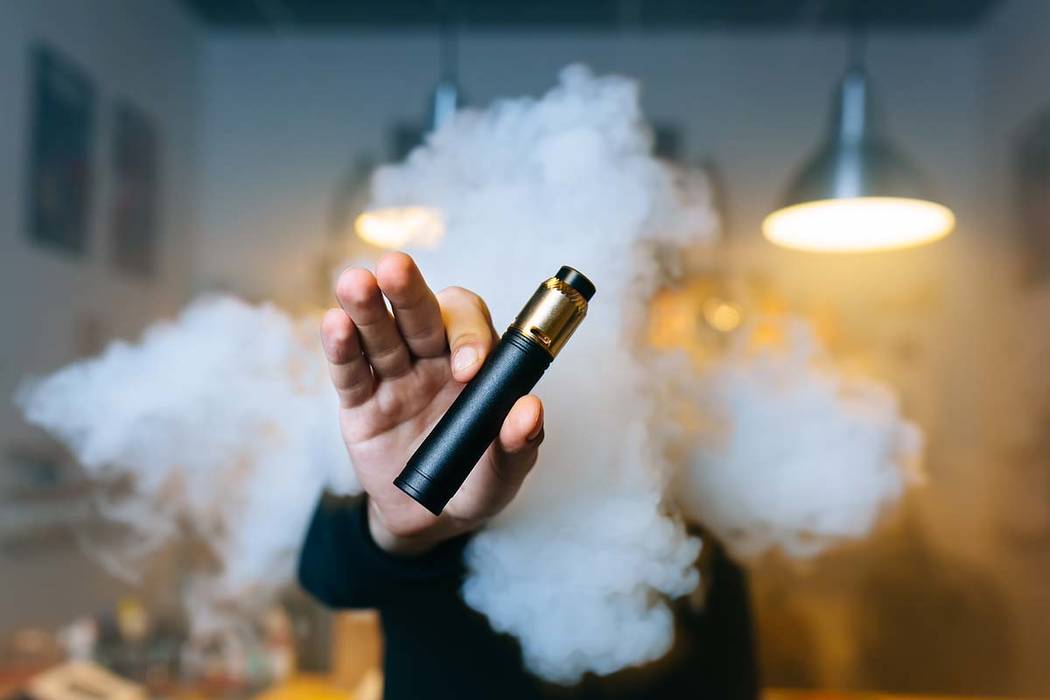VICTOR JOECKS: Trump’s vaping ban won’t stop underage users

A ban on flavors won’t stop underage vaping, but it will make it more dangerous.
On Wednesday, the Trump administration announced plans to ban flavored e-cigarettes within 30 days. The impetus for the ban is the dramatic increase in vaping by teenagers. Vaping delivers nicotine via an aerosol, instead of smoke, like cigarettes. Both are harmful because nicotine use can lead to lung cancer and heart disease. Nicotine is especially dangerous for the developing brains of teenagers.
The Food and Drug Administration estimates that 27 percent of high school students were current tobacco users in 2018. That’s a significant increase from 2017, when that estimate dipped below 20 percent.
The FDA attributes the increase to e-cigarettes. It’s especially worried about flavored vaping products. In 2016, the National Youth Tobacco Survey found 31 percent of teens said they vaped because of the availability of flavors such as candy or mint.
This is bad news. It’d be much better if no teen vaped. But a ban is unlikely to work.
The most obvious evidence of this is that it’s already illegal for teens to use nicotine. If dictates from government bureaucrats were panaceas, this problem wouldn’t exist. Neither would underage drinking.
Bans may stop law-abiding companies from producing a product. But they don’t affect groups or cartels operating in the black market, for an obvious reason. Those groups are already ignoring the law. A ban won’t stop teens from seeking flavored vaping products. It will just ensure they can get the product only from unreliable sources.
This can have unintended consequences. For an example, look at the Centers for Disease Control and Prevention’s latest warning about an epidemic associated with vaping. Earlier this week, the death of a Kansas man was tied to vaping. It was the sixth known death. The CDC has reported more than 450 cases of a vaping-related illness as of early September. On Wednesday, the Southern Nevada Health District reported the first known case in Nevada.
But this illness isn’t related to the well-known health problems associated with nicotine. The CDC is specifically warning about a “severe pulmonary disease that it has linked to e-cigarette use.”
The CDC isn’t sure of the cause. It did note that many patients had used products containing cannabinoids, such as tetrahydrocannabinol or THC. That’s the chemical in marijuana that gets its users high.
Testing by the New York Department of Health provides further evidence for this theory. It has tracked 34 cases of this illness. In every case, the patient used a “cannabis-containing vape product.” Lab tests found high levels of vitamin E oil in almost all of the samples.
That’s odd. Vaping product users want to smoke drugs, not vitamins. Black market sellers, however, can increase their profit margins by diluting their product with vitamin E oil.
When teens want fruit- flavored e-cigarettes, they’ll get their product from these types of sellers if this rule goes forward. Not great.
It’d be nice to think that a government ban can solve the problem of teen smoking. Experience suggests it won’t be that easy.
Victor Joecks’ column appears in the Opinion section each Sunday, Wednesday and Friday. Contact him at vjoecks@reviewjournal.com or 702-383-4698. Follow @victorjoecks on Twitter.